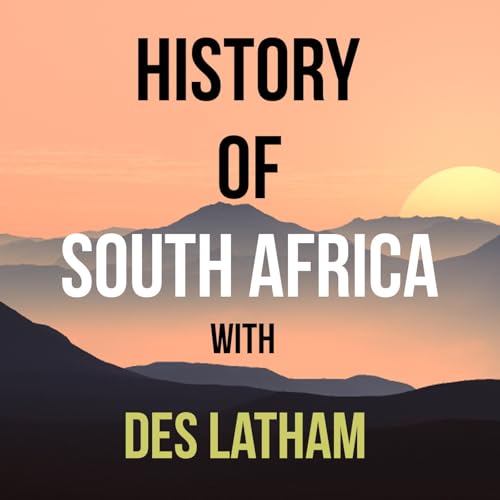
Episode 207 - A Moon of Wonders and Dangers, Supernatural Horsemen and HMS Geyser Turns Tail
Failed to add items
Sorry, we are unable to add the item because your shopping cart is already at capacity.
Add to Cart failed.
Please try again later
Add to Wish List failed.
Please try again later
Remove from wish list failed.
Please try again later
Follow podcast failed
Unfollow podcast failed
-
Narrated by:
-
Written by:
About this listen
You heard last episode about the causes of the Xhosa Cattle Killing, now we’re going to deal with how it spread. The amaXhosa were not alone. Around the world, frontier battles had lit up the globe, the pressure of these new arrivals on indigenous people had burst into flames.
In Seattle, U.S. Marines had been dispatched by ship in January 1856 to suppress a Native American uprising. The First People’s were resisting pressure to cede land - they were being herded into reservations and opposed the plan. Just to set the tone, a few days before the attack on Seattle, Washington Governor Isaac Stevens had declared a "war of extermination" upon the Native American Indians. Seattle was a small, four-year-old settlement in the Washington Territory that had recently named itself after Chief Seattle - a leader of the Suquamish and Duwamish peoples of central Puget Sound.
In Utah, the Tintic war had broken out in the same month between the Mormons and Ute people - it ended when the Federal Government took the Ute’s land but intermittent clashes and tension continued. This went on all the way to the Second World War in the twentieth century, with the Ute’s demanding compensation.
In India, the Nawab of Oudh, Wajid Ali Shah, was exiled to Metiabruz and his state was annexed by the British East India Company.
Following our story about Surveyors in South Africa, it is interesting to note that in March 1856 The Great Trigonometrical Survey of India officially gave 'Peak XV' the height of 29 thousand and 2 feet. We know Peak XV now as Mount Everest and its actually 29 000 and 31 feet.
Also in March 1856, the Great Powers signed the Treaty of Paris, ending the Crimean War. Soon thousands of British German Legion veterans of the Crimean war would arrive in South Africa.
In May 1856, Queen Victoria handed Norfolk Island to the people of Pitcairn Island — famous for being descendents of the Mutiny on the Bounty. The Pitcairners land on Norfolk Island promptly extend their Pitcairn social revolution idea - to continue with women’s suffrage.
David Livingstone arrived in Quelimane on the Indian Ocean having taken two years to travel from Luanda in Angola on the Atlantic Ocean across Africa.
And in South Africa, since April, amaXhosa had been killing their cattle upon hearing of the Prophet Nongqwase of Gxarha, whose pronouncements were now being managed by Mhlakaza her uncle.
King Sarhili had visited the mysterious River and pronounced his support for her visions which spoke of salvation through cleansing of goods and cattle. Killing cattle and throwing away goods, she warned of witchcraft destroying the Xhosa, she had been spoken to by two men in a bush. Nongqawuse and her little ally, Nombanda, were visited by Xhosa from far and wide to hear her story directly.
The most privileged visitors were taken to the River and the Ocean, but most of these men and women heard nothing - no voices although Nongqawuse continued to relay the two stranger’s messages to those present. A minority began to claim they heard the voices.
Rumours of the happenings spread like wild fire and the official sanction of King Sarhili Ka-Hintsa of the amaGcaleka removed the last doubts from many who desperately wanted this prophecy to have power. And yet most of the amaXhosa chiefs intitially opposed the prophecies, but were ground down mentally, dragged into the worse form of cattle killing by the commoners. The believers began the comprehensive work of destruction. This back and forth went on until what is known as the First Disappointment.
No reviews yet


